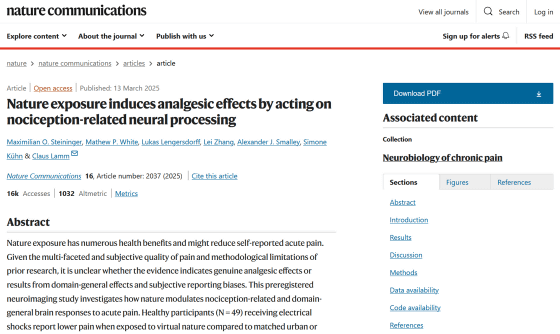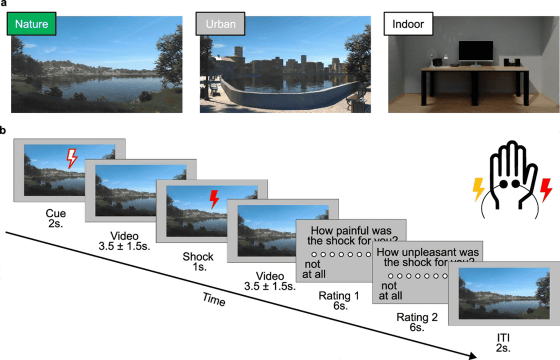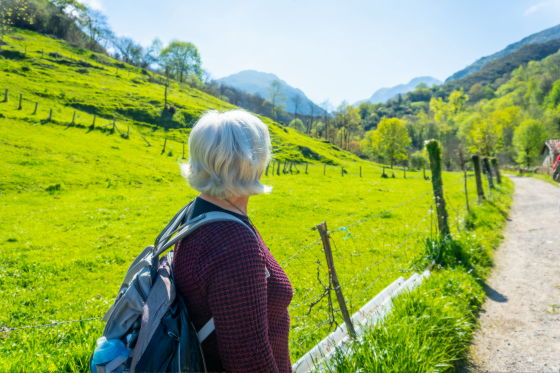It turns out that simply looking at natural scenes actually reduces pain-related brain activity

Previous research has shown that spending time in nature has a variety of health benefits, including
Nature exposure induces analgesic effects by acting on nociception-related neural processing | Nature Communications
https://www.nature.com/articles/s41467-025-56870-2

Watching nature scenes can reduce pain, new study shows | EurekAlert!
https://www.eurekalert.org/news-releases/1076537
Looking at Images of Nature Does Something Powerful in The Brain : ScienceAlert
https://www.sciencealert.com/looking-at-images-of-nature-does-something-powerful-in-the-brain
The fact that viewing nature can reduce pain has been known for decades: A 1984 study showed that patients hospitalized in rooms with views of nature stayed in hospital shorter and used less painkillers than those in rooms facing brick walls.
Since then, several studies have been conducted on nature and pain, but the mechanism by which nature reduces pain remains unclear. There is a possibility that some changes occur in the brain when viewing nature, that a placebo effect is occurring due to a preference for nature, or conversely, that viewing urban scenery increases pain.
A research team from the University of Vienna in Austria and the University of Exeter in the UK conducted an experiment in which subjects were subjected to pain via electric shock while their brain activity was measured using functional magnetic resonance imaging (fMRI) .
In the experiment, 49 subjects were given a series of electric shocks on the back of their left hands while they watched three videos created by professional graphic designers: 'Nature,' 'Urban,' and 'Indoor.' The videos included animations such as ripples on a lake, swaying leaves, and the movement of clouds and the sun, as well as environmental sounds that corresponded to the scenery being viewed. For example, the nature scenes included the sounds of water and birds singing, the urban scenes included the sounds of cars and construction work, and the indoor scenes included the sounds of computers and fans.

When participants were asked to report their subjective pain, they found that they reported significantly less pain when watching images of nature, with no difference between urban and indoor images.
Furthermore, analysis of the subjects' brains with fMRI revealed that brain activity related to
Maximilian Steininger, lead author of the paper and a doctoral student at the University of Vienna, said: 'Numerous studies have consistently reported that people feel less pain when exposed to nature, but the underlying reasons for this effect were unknown. Our study is the first to show from brain scans that this effect is not simply a placebo effect, but is driven by the belief and expectation that nature is good for the body.'
However, the pain reduction effect of the nature images was only about half that of painkillers, so people who are in pain will need to continue taking prescribed painkillers. Nevertheless, the results of this study may lead to the development of methods to manage pain using nature.
Co-author Dr Alex Smalley from the University of Exeter said: 'The fact that this pain-relieving effect can be achieved through easy-to-administer virtual exposure to nature has important practical implications for non-pharmacological treatments, but also opens up new avenues of research into better understanding how nature affects our minds.'

Related Posts:
in Science, Posted by log1h_ik







